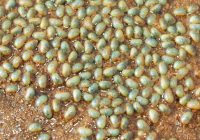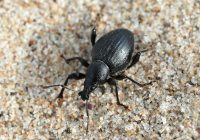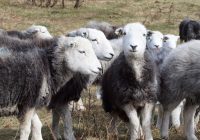Dr Phil Smith’s Wildlife Notes
March 2016
A fairly wet start and finish to the month were separated by a prolonged settled spell of about two weeks, rather typical of recent early springs. The dry period caused a fall of about 3.5cm in the sand-dune water-table, according to my weekly measurements at the Devil’s Hole slack. However coastal wetlands remained deeply flooded throughout, attracting the usual early breeding amphibians. A visit to Wicks Lake on 10th was enriched by the gentle purring of male Common Frogs in the reed-bed, while more strident calls came from male Common Toads competing for females. Near the brim-full lake were lots of spring flowers, including the first Primroses and garden-escapes such as Siberian Squill, Corsican Hellebore and Spring Snowflake.
A couple of days later, large numbers of Common Toads were assembling to spawn at Cabin Hill. It was rather disturbing to count 58 individuals recently killed by a predator that had mainly eaten just the back legs. We have seen this kind of mortality at Cabin Hill before but have never been able to identify the perpetrator. It seems to be quite unusual because Common Toads are protected by poison glands in their skin. On 25th, I counted 12 Smooth Newts in the scrape near Range Lane, Formby. These newts are common and widespread in the dunes but often hard to see because they prefer deep water at this time of year. Through my binoculars, I watched a female trying to eat Frog spawn, a behaviour I hadn’t observed before, though it is mentioned in the literature. Also new to me was a pale blue “tide-line” around a scrape at Birkdale Green Beach. Closer inspection revealed thousands of 1mm-long jewel-like Ostracods, a type of planktonic crustacean sometimes known as “Seed Shrimps”.
Other signs of spring included the flowering of several kinds of willows. At Ravenmeols, the male “pussy willow” catkins of Goat and Grey Willow attracted hosts of queen bumblebees, mainly Buff-tailed but also a few Red-tailed and Tree Bumblebees. I also stopped off at Larkhill, Formby, to photograph the wonderfully colourful catkins of Purple Willow, one of my favourite plants. Nearby, three Red Squirrels were showing at the National Trust’s “squirrel reserve”, one particularly dark individual reflecting the likely continental origin of this population. Another targeted visit was to the Southport Marine Lake dunes, where the nationally rare Early Sand-grass is locally abundant. Being only about 3cm tall, it is often described as “the smallest grass in the World” and also has a particularly early flowering season from February to April.
Early insects included a Small Tortoishell on 7th and a black beetle I encountered on the frontal dunes at Ainsdale on 13th. I knew it was a weevil but this is an enormous family. Nevertheless, it didn’t take long to identify it on the internet as the Black Marram Weevil, a local insect confined to dunes around the British coast. A warm sunny Good Friday produced a Sand Wasp and a Groundhopper at Ravenmeols, while Pete Kinsella reported the first Vernal Mining Bees at Hightown, where he also saw three Wheatears and his earliest ever Swallow.
Other birds on the move included Crossbills reported at several places along the coast. A mobile flock of 10 with their unmistakable chipping calls was at Freshfield Dune Heath Nature Reserve on 16th, while five Redpolls feeding on Sea Rush seeds made an attractive picture at Weld Road saltmarsh, Birkdale at the end of the month. The Redpoll used to be a common bird hereabouts but has undergone a massive decline both nationally and locally since the 1970s. Avocets continued their spring influx to the RSPB’s Marshside Nature Reserve, where I counted 60 on 14th. Remaining winter visitors included 38 Common Snipe and three Jack Snipe at Cabin Hill, where the flock of curious and surprisingly tame Herdwick sheep from the Lake District strolled right up to me. This attractive and hardy breed is ideal for conservation grazing on the National Nature Reserve.
A meeting of the Altcar Training Camp Conservation Advisory Group brought news of Steve Cross’s monthly counts of shorebirds for the national wetland birds survey. During the winter, up to 37,500 waders flocked to the high-tide roost on the Rifle Range frontage, Knot being the dominant species. This is probably the largest single wader roost from the Dee to the Ribble. It seems many of these birds feed on the north Wirral shore, flying across Liverpool Bay at high-water to take advantage of the disturbance-free beach at Altcar.
The Sefton Coast’s reputation spreads far and wide. Recently, I was contacted by the Millennium Seed Bank at Kew to request a sample of Dune Wormwood seed for the National Collection. Crosby Coastal Park is one of only two British localities for a plant first found here in 2004.




